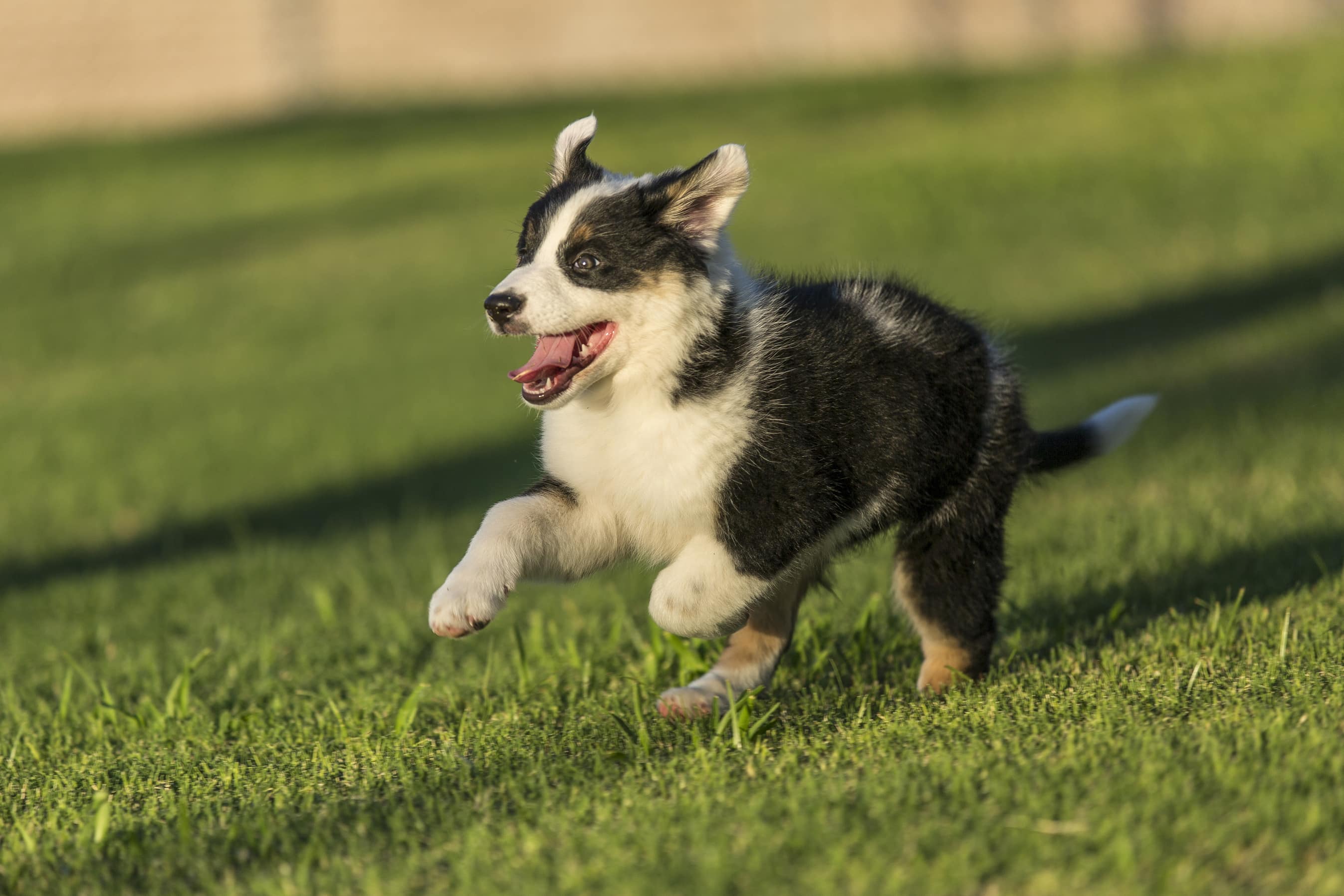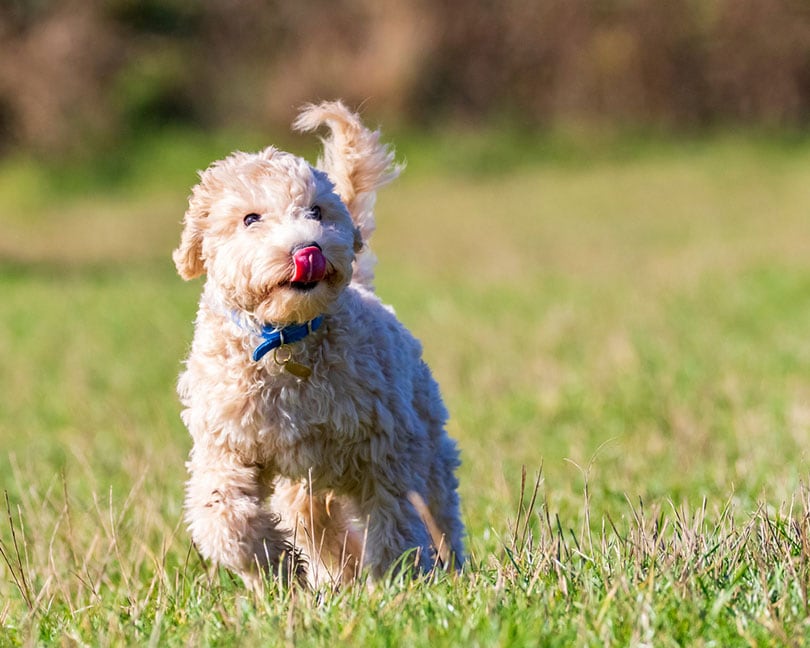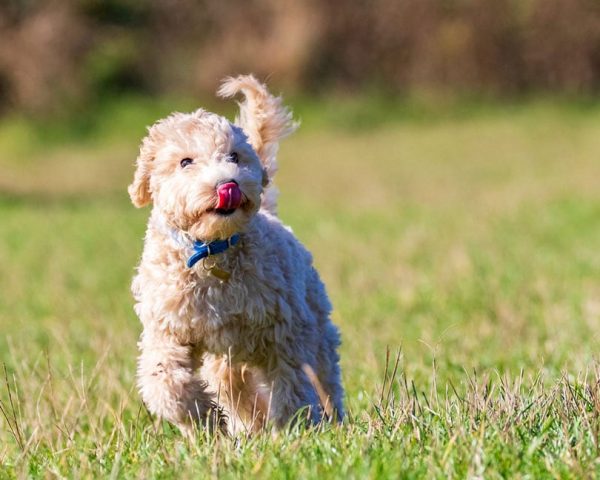Puppies often appear to have limitless energy, and can become bored and frustrated if they are not given sufficient exercise. A bored puppy will find ways to entertain itself—by digging, chewing, barking, and getting into other kinds of mischief!
While exercise is a great way to provide a healthy outlet for a puppy’s energy, we need to ensure that we don’t over-exercise our pups, and that we avoid certain kinds of exercise while our puppies are growing. Too much exercise or the wrong type of exercise may lead to joint issues further down the line, especially in large and giant breed dogs. As a rule of thumb, the puppy should have two sessions of five minutes of exercise for each month of age. Let’s explore the issue in more detail.
Puppies and Exercise: How Much is Enough?
So, how much exercise does a puppy need exactly? What counts as too much or too little? Unfortunately, the answer to the question is not straightforward. At present, we do not have guidelines that are backed up by quality research for the exact amount of exercise that a puppy needs based on its age and breed.
However, many experts agree that puppies need less exercise than fully-grown dogs. Although exercise needs vary among breeds, a general guide that can be followed to safely exercise your pup, is to provide him or her with two sessions of five minutes of exercise for each month of age. For example, a three-month-old pup can be exercised for 15 minutes, twice a day—compared to a five-month-old pup, which can be exercised for 25 minutes at a time, twice daily.
These exercise sessions don’t have to be fast-paced. A short, easy walk will suffice, allowing for plenty of rest and frequent stops for your puppy to sniff his or her surroundings. You may need to adjust this exercise schedule according to your individual puppy’s needs. Pay close attention to how your puppy handles this amount of exercise and adjust it accordingly.
Continue with this exercise schedule until your puppy is fully grown. Small-breed dogs are considered to be fully grown at around 10–12 months of age, while medium-breed dogs reach full growth between 12–15 months. Large and giant breed dogs take the longest to mature—large breed dogs are typically fully grown at 18 months, while giant breeds reach their full growth potential at 18–24 months.

What Type of Exercise is Suitable for a Puppy?
What is equally important as the amount of exercise that a puppy needs, is the type of exercise they should receive.
One study looking at the risk factors for the development of hip and elbow dysplasia in Labrador Retrievers, identified jarring, high-impact exercise, such as running after a ball or a stick in a high speed, as risk factors for the development of these joint conditions.1 Another study showed that prolonged or jarring activity might lead to the development of joint issues in certain large and giant breeds of dogs.2
High-impact exercise, such as running on the road or pavement, jumping from heights, sharp turns, and running up and down the stairs should be avoided while your pup is still growing. Low-impact exercise, such as walking on soft surfaces like grass and sand are a better option for puppies, as it puts less stress on developing bones and joints.
More Than Just Daily Walks
Mental stimulation is just as important as physical exercise for puppies. Daily mental exercise will help keep your pup from becoming bored and developing unwanted and destructive behaviors like digging and chewing. It’s also a great way to bond with your puppy and improve your relationship.
Problem-solving puzzles and games like hide and seek will help keep your pup mentally challenged. Meal times can also be used as an opportunity for problem-solving. Feed your pup at least one meal per day from an interactive feeder, or a fill a treat dispensing food toy with their kibble. Get creative!

Conclusion
Although we don’t have research-backed guidelines for how much exercise a puppy needs, based on its age and breed, most puppies can be safely exercised for two sessions of five minutes for each month of age. The type of exercise a puppy receives is equally as important as how much. Prolonged, high-impact exercise while a puppy is still growing may lead to the development of future joint issues and should be avoided. Because of this, low-impact exercises are a safer option.
Finally, a puppy’s daily physical exercise should be supplemented with mentally stimulating activities, which provide an additional outlet for excess energy, helping to curtail destructive behaviors. Remember that each puppy is different, so you may need to adjust your pup’s exercise program according to their individual needs. If you have questions regarding exercise for your puppy, your veterinarian is the best person to speak to.
Featured Image Credit: Radovan Zierik, Shutterstock












